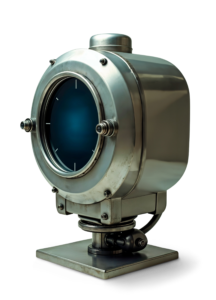Advances in MEMS Technology for IoT & Wearable Applications
MEMS Technology in IoT and Wearables Micro-Electro-Mechanical Systems (MEMS) technology has made significant strides, driving innovations in IoT and wearable devices. This article delves into the latest advancements in MEMS and their applications, highlighting their impact on these sectors. Understanding MEMS Technology MEMS technology involves the integration of mechanical elements, sensors, actuators, and electronics on […]

MEMS Technology in IoT and Wearables
Micro-Electro-Mechanical Systems (MEMS) technology has made significant strides, driving innovations in IoT and wearable devices. This article delves into the latest advancements in MEMS and their applications, highlighting their impact on these sectors.
Understanding MEMS Technology
MEMS technology involves the integration of mechanical elements, sensors, actuators, and electronics on a common silicon substrate. Recent advancements in MEMS technology are transforming the landscape of IoT and wearable devices by enabling smaller, more efficient, and highly functional components.
Key Advancements in MEMS Technology
Miniaturization and Integration One of the most significant advancements in MEMS technology is the continued miniaturization of components. Smaller MEMS devices are essential for the compact and lightweight designs of modern IoT devices and wearables. Additionally, the integration of multiple functions within a single MEMS device enhances performance and reduces power consumption.
Miniaturization has allowed for the development of MEMS sensors that can be embedded in a variety of environments, from the smallest wearable devices to large industrial machinery. This has expanded the range of applications for MEMS technology, enabling new functionalities and improving existing ones.

Enhanced Sensing Capabilities MEMS sensors are becoming increasingly sensitive and accurate. Innovations in material science and fabrication techniques have led to the development of sensors that can detect minute changes in environmental conditions, such as temperature, pressure, and humidity. These advancements are critical for applications in healthcare, environmental monitoring, and industrial automation.
Enhanced sensing capabilities mean that MEMS devices can provide more detailed and accurate data, which is essential for decision-making in various IoT and wearable applications. For instance, in healthcare, MEMS sensors can monitor vital signs with high precision, leading to better patient outcomes.
Image Courtsey: Freepik
Energy Efficiency Energy efficiency is a crucial factor for IoT and wearable devices. Advances in MEMS technology have resulted in sensors and actuators that require less power to operate, extending the battery life of devices. This is particularly important for wearables that need to function for extended periods without frequent recharging.
Energy-efficient MEMS devices also contribute to the sustainability of IoT applications. By reducing power consumption, these devices help minimize the environmental impact of IoT systems, making them more eco-friendly.
Wireless Communication The integration of wireless communication capabilities into MEMS devices has opened up new possibilities for IoT applications. MEMS-based wireless sensors can communicate data in real-time, enabling remote monitoring and control. This is particularly useful in applications such as smart homes, industrial automation, and healthcare.
Wireless communication allows MEMS devices to be deployed in a wide range of environments, from remote industrial sites to urban areas. This flexibility makes it possible to gather data from diverse locations, providing a more comprehensive understanding of the environment.
Impact on IoT and Wearable Devices
IoT Applications MEMS technology is at the heart of many IoT applications. For example, MEMS sensors are used in smart homes to monitor environmental conditions, control lighting and heating systems, and enhance security. In industrial settings, MEMS devices are used for precision monitoring and control, improving efficiency and reducing downtime.
IoT applications benefit from the reliability and accuracy of MEMS sensors. These devices can operate in harsh environments and provide consistent performance, making them ideal for critical applications such as environmental monitoring and infrastructure management.
Wearable Devices Wearable devices such as fitness trackers, smart watches, and health monitors rely heavily on MEMS technology. These devices use MEMS sensors to track physical activity, monitor vital signs, and provide feedback to users in real-time. Advances in MEMS have led to wearables that are more accurate, reliable, and comfortable to wear.
In the realm of wearables, MEMS technology has enabled the creation of devices that are not only functional but also fashionable. The miniaturization of components means that wearables can be designed to be discreet and aesthetically pleasing, making them more attractive to consumers.
Healthcare Applications One of the most promising areas for MEMS technology is healthcare. MEMS sensors are used in a variety of medical devices, from glucose monitors to pacemakers. These sensors provide real-time data on patients’ health, allowing for timely interventions and improved outcomes.
Advancements in MEMS technology are enabling the development of more sophisticated medical devices. For example, MEMS-based drug delivery systems can provide precise doses of medication, reducing the risk of side effects and improving patient adherence to treatment plans.
Industrial Automation In industrial automation, MEMS devices are used for monitoring and controlling machinery. These sensors can detect changes in pressure, temperature, and vibration, providing valuable data for maintenance and optimization. By enabling predictive maintenance, MEMS technology helps reduce downtime and improve operational efficiency.
Industrial applications benefit from the durability and reliability of MEMS devices. These sensors can withstand harsh conditions and provide accurate data over long periods, making them essential for maintaining the performance and safety of industrial systems.
Environmental Monitoring MEMS technology is also being used in environmental monitoring applications. MEMS sensors can detect pollutants, measure air and water quality, and monitor climate conditions. This data is critical for managing natural resources and protecting the environment.
Environmental monitoring applications benefit from the high sensitivity and accuracy of MEMS sensors. These devices can detect even small changes in environmental conditions, providing valuable data for researchers and policymakers.
The advancements in MEMS technology are significantly impacting IoT and wearable devices. These innovations are enabling the development of smaller, more efficient, and highly functional devices that can meet the growing demands of these sectors. As MEMS technology continues to evolve, we can expect even more groundbreaking applications and improvements in the future.


